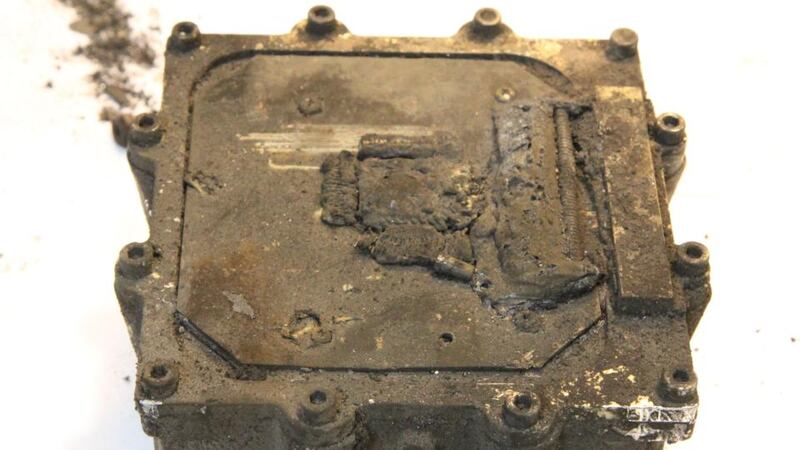The second "black box" of Germanwings flight 9525 has confirmed not only that co-pilot Andreas Lubitz deliberately crashed the Airbus 320 on March 24th, but that he increased the speed as the plane descended to achieve maximum destruction on impact.
“The initial readout [of the flight data recorder] shows that the pilot present in the cockpit used the autopilot to put the aircraft into a descent towards an altitude of 100 feet, then, on several occasions during the descent, the pilot modified the autopilot setting to increase the speed of the descent,” the French investigation and analysis bureau BEA said in a statement.
The flight data recorder was discovered in a ravine on the crash site on Thursday by Alice Coldefy, the only woman from the mountain gendarmerie unit based at Chamonix. Coldefy was digging by hand in an area that had already been searched.

“It was in a pile of clothes,” she said. “We were moving debris down the slope when I discovered a box the colour of the black gravel in the zone . . . It’s a huge relief for everyone working in the zone.”
The surface of the recorder was charred and misshapen, but it nonetheless delivered its secrets.
Survive temperatures
Cockpit voice and flight data recorders can survive temperatures of 1,100 degrees and resist pressure of one tonne per square centimetre,
Jean Serrat
, an aviation expert and former airline pilot, told Europe 1 radio.
“With the information we received today,” Mr Serrat said, “it’s 99.9 per cent. We know this was someone who not only managed his suicide in a horrible way, but that it was premeditated and prepared in advance. The most frightening thing is [Lubitz’s] calm, to the very end.”
The flight’s captain had left the aircraft on automatic pilot when he left to go to the toilet.
“Lubitz turns a small button to 100 feet, that is to say well below the ground altitude of approximately 1,500 metres,” Mr Serrat said. “The plane starts going down at a rate of 1,000 metres a minute. He’s controlling the speed, because . . . as it descends, a plane tends to slow down. Not only is [Lubitz] bringing the plane down, but he takes the cold, deliberate decision to accelerate the speed to the maximum before impact.”
On March 27th, Lufthansa, the parent company of Germanwings, said it knew nothing of Lubitz's mental health problems. Four days later, the airline admitted that he had informed its training centre in 2009 that he underwent "a period of severe depression".
Searched offices
German prosecutors have searched the offices of five doctors whom Lubitz consulted,
Der Spiegel
magazine reported on Friday.
Brice Robin, the Marseilles prosecutor who on March 26th revealed that Lubitz locked the pilot out of the cockpit and deliberately crashed the plane, said forensic scientists have isolated 150 DNA profiles from more than 2,000 samples collected at the crash site. These must now be compared to samples submitted by family members.
The BEA has said it will propose new regulations for cockpit doors and the psychological screening of pilots.
The analysis bureau has established a record for identifying the causes of air crashes, but has been criticised here for failing to explain the findings from the cockpit voice recorder.
"We have to consider the possibility of deliberate human responsibility," BEA director Remi Jouty said on March 25th. That night, the New York Times revealed that one of the pilots locked the other out and deliberately provoked the crash.
“If US journalists hadn’t given us the scenario, we’d have been discussing the possibility of mechanical breakdown or terrorist attacks for days more,” said a presenter on BFM TV. “This raises the question of communication by the BEA.”










